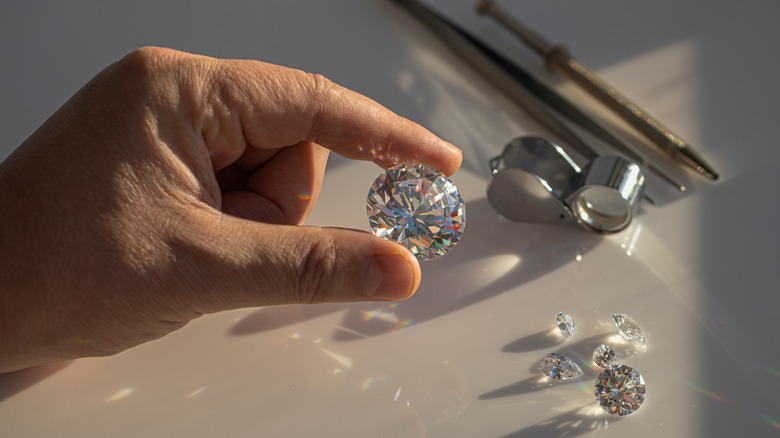The Myth About Diamonds You Should Stop Believing
Diamond is one of the most remarkable substances on Earth. For many of us, diamonds are objects we'll only see in museums, or adorning the fingers, earlobes or other body parts of celebrities, or perhaps being jealously guarded by dragons or trolls in movies.
According to WP Diamonds, some of these gems have a value that simply cannot be comprehended. The Cullinan, or Star of Africa, which was unearthed in a South African mine in the early 20th century, has an estimated worth of up to $2 billion. Meanwhile, few dare to even venture a worth for the legendary Koh-I-Nor.
Some supposed "facts" about this astonishingly costly substance have been called into question, though. As Forbes reports, diamond isn't technically the strongest material on Earth, with artificial creations like palladium microalloy glass and the natural wurtzite boron nitride among others potentially topping it (if enough of the latter were found to be tested extensively).There's another common misconception about diamonds that needs to be addressed too: they aren't actually formed from coal at all.
All that glitters isn't coal
Per Gage Diamonds, they each form in very similar yet completely distinct ways. Coal is formed beneath the Earth under great pressure, as diamonds are. Tremendous heat is also required for the process, and both are carbon-based substances. This much is certainly true, but there are important distinctions to be made that set the two substances apart from each other.
As reported by the U.S. Energy Information Administration, coal is a rock that gradually formed over millions of years. It's made of dirt and a soggy mess that used to be prehistoric plants. There are four main varieties of coal: lignite, subbituminous, bituminous and anthracite. They're mostly distinguished by the amount of carbon and energy they contain, with the rarer anthracite being older, richer in these qualities, and having had more exposure to extreme pressures and temperatures.
How does this differ from the process that produces bright, beautiful diamonds? By its very nature, coal cannot form a diamond. The crucial distinction, on a molecular level, is that coal is composed of plant materials as well as carbon. Diamonds, meanwhile, are made up purely of carbon minerals. Further, per Geology, diamonds seemingly formed far deeper below the surface than coal. Though it's possible that the latter may have formed some of the carbon content of diamonds created through asteroid impact (a process that generates sufficient heat and pressure for the precious commodity to form in very rare cases), it's very unlikely.

